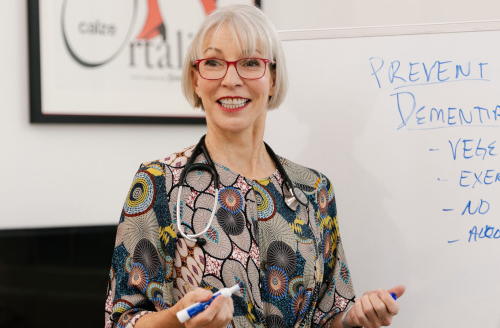Many families who consult our practice are surprised to find that there are many kinds of dementia. It’s not just Alzheimer’s disease that can cause cognitive decline.
One of the most confounding types of dementia is called “Lewy body dementia.”
Lewy body dementia stems from protein deposits that cause the brain to slow down some brain transmitters’ production and increase others. Like Alzheimer’s, it can cause confusion. It can also share some symptoms—tremors, rigid muscles, slowed movement—with Parkinson’s disease.
The hallmark of this form of dementia is early onset. It may also cause visual hallucinations: everything from abstract shapes to conversations with departed loved ones. It can also cause dramatic mood swings: a person may be clear and sunny one day and delusional the next. While Alzheimer’s patients can also have hallucinations, they are not usually one of the first symptoms. If the hallucinations come first, chances are the problem may be Lewy body dementia.
Lewy body dementia can be very stormy: The patient may seem fine, then suddenly become very paranoid. He may improve for a while, then suddenly deteriorate. As the disease progresses, the patient becomes stiffer and stiffer, less and less interactive.
One of the problems in treating this type of dementia is that its symptoms can be mistaken for Parkinson’s disease. But the usual treatments for Parkinson’s disease, such as Sinemet, can worsen the agitation and stormy behavior of those who have Lewy body dementia.
If you’re not sure what sort of problem your elder has, it’s vital to consult a trained geriatric specialist.
Tune In Saturdays at Noon (PST) for High Noon with Dr Liz + Friends
Check Out Our Upcoming Workshops
Telehealth: One-To-One Education

Elizabeth (Dr Liz) has over twenty years of experience in providing medical care to the elders. She is board-certified in Internal Medicine, Geriatric Medicine and Palliative Care Medicine. Dr Landsverk founded ElderConsult Geriatric Medicine, a house calls practice, to address the challenging medical and behavioral issues often facing older patients and their families.

